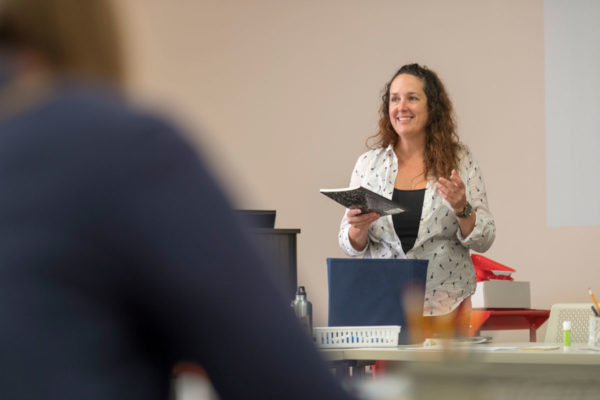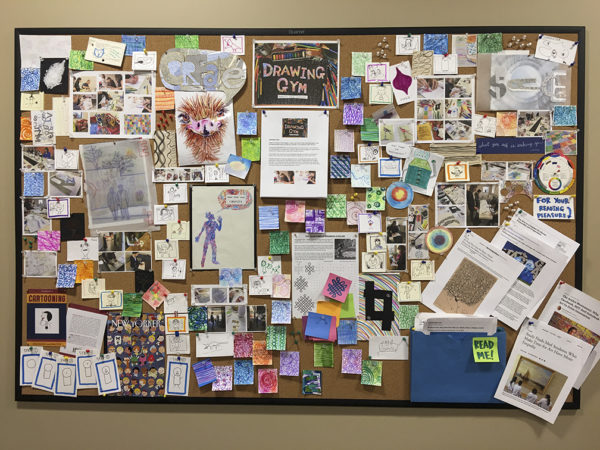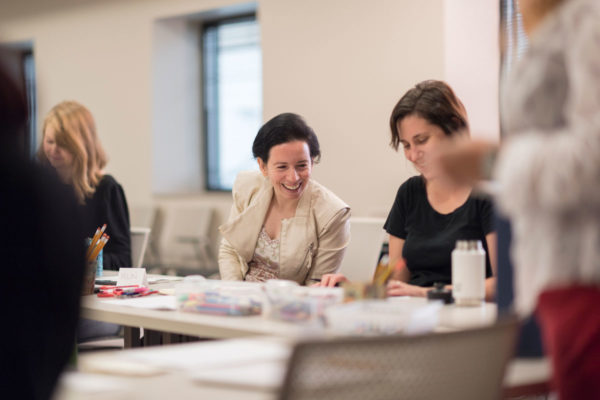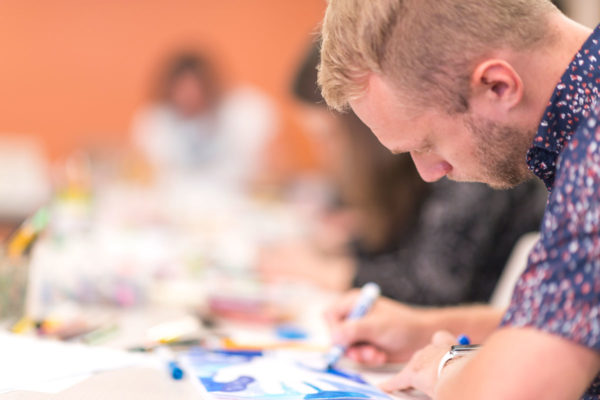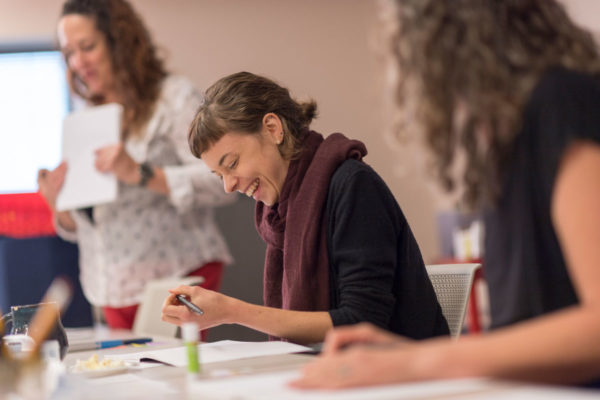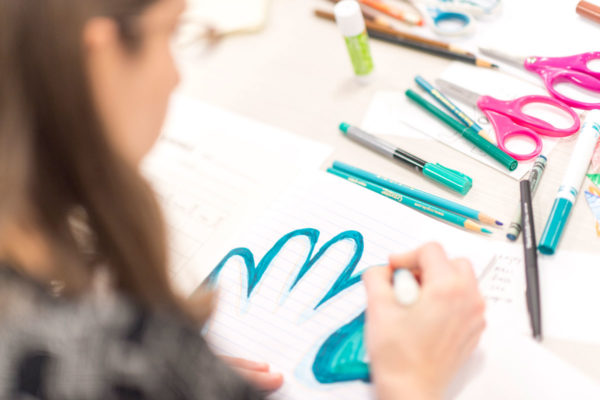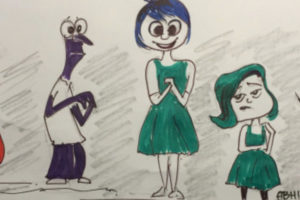Center experts are still exploring how the contemplative arts can be integrated more into research. At a recent meeting on the topic distinct patterns emerged. Some people noted an initial discomfort participating in Drawing Gym because making art has been deemed less valuable than other types of work. One person mused, “Drawing Gym is fun. Is it OK to have fun at work?”
Yet beyond having fun, Drawing Gym has positively affected Center staff.
Nate Vack, a software developer at the Center, reports that a drawing exercise in which participants suspended judgment about their work helped him quiet his internal critic once he was back at his desk.
“I had an idea of creating something recently. I was thinking it would take a lot of time and it would have to be perfect,” Vack says, “But then I asked myself, ‘What if it didn’t have to be perfect?’ and moved forward creating something in a few hours. It wasn’t perfect, but I proved a concept and moved on.”
Other people echoed Vack’s sentiment, noting that they make art in Drawing Gym free of judgment or critique. Another person noted that Drawing Gym allows her to create without thinking, but rather by doing.
When it comes to the relationship between the arts and well-being, there are more questions than answers, and that’s part of the process, says Goldman.
At the same time, people noticed how they connected with their emotions during Drawing Gym in an unconventional way. Rather than simply thinking about feelings, participants notice that the art they create tends to reflect their mental state – as if the canvas itself was a messenger for a person’s internal life.
